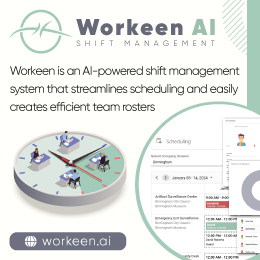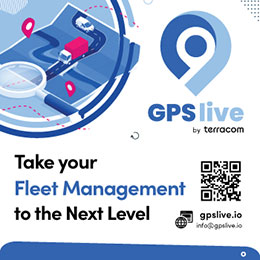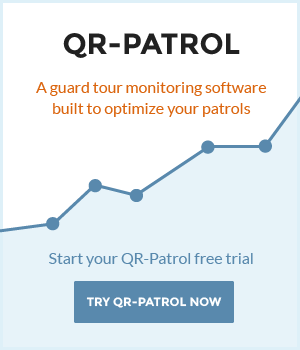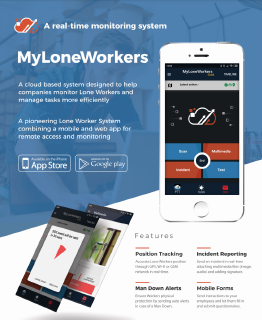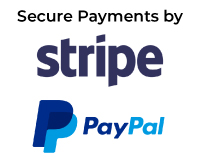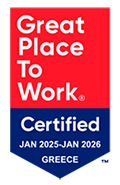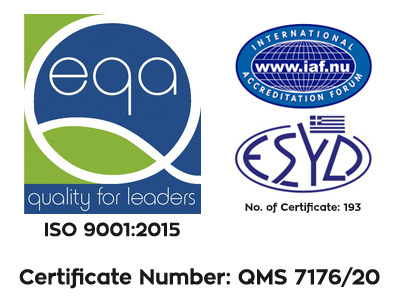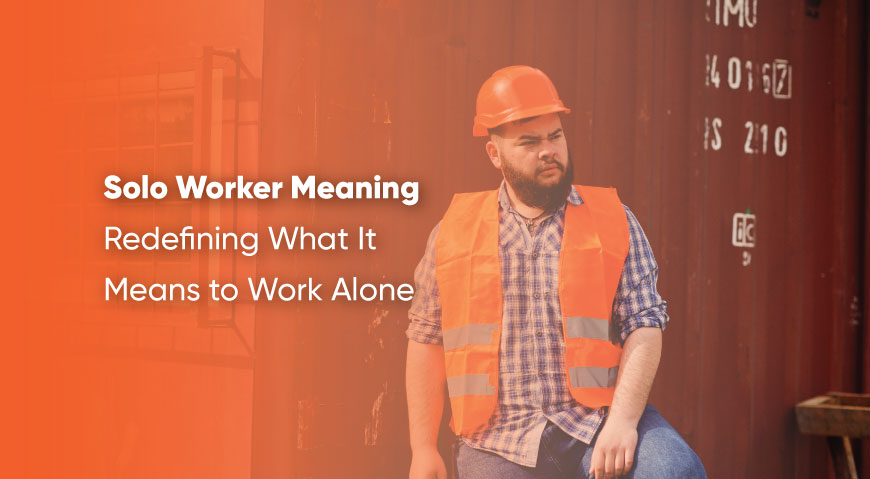
Solo Worker Meaning: Understanding What It Means to Work Alone in the Modern Field Environment
Table of Contents
- Solo Worker Meaning: What Does It Mean to Work Alone?
- Field Worker Definition: Who Are They and Why Are They at Risk?
- How Solo Workers Differ from Lone and Remote Workers
- Psychological Impact of Working Alone: Why Support Matters
- Technology for Solo Worker Safety: How MyLoneWorkers Leads the Way
- Key MyLoneWorkers Features Every Solo Worker Needs
- How MyLoneWorkers Enhances Field Operations and Compliance
- Actionable Tips to Keep Solo Workers Safe
- Why Choose MyLoneWorkers for Your Solo and Field Teams
- Conclusion: Redefining What It Means to Work Alone
In the world of field services and remote operations, the concept of a solo worker has become increasingly important. Whether it’s a technician inspecting pipelines, a security officer on night patrol, or a maintenance worker on-site, more employees than ever are working alone or remotely.
But what exactly does it mean to be a solo worker? How does this differ from other types of remote work? And what steps can companies take to keep these professionals safe?
This guide explores the solo worker meaning, provides a clear field worker definition, and explains what it means to define alone in the modern workplace — with practical insights on how MyLoneWorkers helps protect those working independently in the field.
Solo Worker Meaning: What Does It Mean to Work Alone?
A solo worker is any employee who performs their duties without direct or immediate supervision. This can include individuals who work:
- In isolated environments, such as oil rigs or rural maintenance sites
- Outside standard working hours, like security guards or cleaners
- In the field, moving from one client or job location to another
To define alone in a professional sense means more than physical isolation — it involves operating without direct assistance nearby, often relying on technology to stay connected.
Unlike typical office employees, solo workers must balance self-reliance with safety awareness. Their independence can be empowering, but it also introduces unique risks, from accidents to delayed emergency responses.
Field Worker Definition: Who Are They and Why Are They at Risk?
Understanding the field worker definition helps highlight why proper safety systems are essential.
A field worker is typically a professional whose job requires them to perform tasks away from a centralized workplace. Common examples include:
- Maintenance or repair technicians
- Security officers and guards
- Utility inspectors
- Healthcare or social service providers visiting clients
- Engineers or surveyors working in the field
Field workers often operate in variable, uncontrolled environments — outdoors, in client premises, or on industrial sites. As a result, they face heightened risks including:
- Physical hazards: slips, falls, or exposure to harmful substances
- Environmental dangers: weather, temperature extremes, or poor lighting
- Psychological strain: stress, fatigue, or isolation from colleagues
For companies managing field teams, understanding the field worker definition is the first step in implementing comprehensive safety measures like MyLoneWorkers.
How Solo Workers Differ from Lone and Remote Workers
Although the terms are often used interchangeably, it’s important to distinguish between solo workers, lone workers, and remote workers:
- Solo Worker: Works independently, without nearby colleagues or supervision (e.g., a field technician or guard).
- Lone Worker: Works completely alone, sometimes in hazardous or isolated environments (e.g., a night security guard in a warehouse).
- Remote Worker: Works away from the central office, often from home or another location, but remains digitally connected to a team.
In short, all lone workers are solo workers — but not all solo workers are lone. The distinction matters when developing tailored safety and monitoring solutions.
MyLoneWorkers bridges these definitions by offering tools that cover both physical safety and digital connectivity, ensuring that even those who “work alone” are never truly isolated.
Psychological Impact of Working Alone: Why Support Matters
To define alone at work isn’t just a physical state — it’s also an emotional experience. Being a solo worker can create feelings of isolation, stress, or vulnerability, especially during long shifts or in high-risk environments.
Common challenges include:
- Anxiety about emergencies or incidents without nearby help
- Fatigue from constant vigilance or extended hours
- Reduced communication, leading to decreased morale
- Mental strain from balancing independence with accountability
Organizations must recognize that protecting solo workers involves both physical and psychological support. Systems like MyLoneWorkers help address both — not only detecting falls or emergencies but also fostering a sense of connection through real-time monitoring and communication tools.
Technology for Solo Worker Safety: How MyLoneWorkers Leads the Way
Modern workforce management relies on smart, connected solutions. MyLoneWorkers is a comprehensive cloud-based system designed to monitor, support, and protect solo and field workers in real time.
Here’s how it works:
- Workers use a mobile app (available on Android and iOS) to scan NFC, Beacon, Virtual, or QR-code checkpoints placed at designated areas.
- Each scan transmits time and location data (GPS, Wi-Fi, GSM) to the MyLoneWorkers Web application via a secure cloud server.
- Supervisors can instantly view activity, incidents, and alerts, ensuring constant visibility of every team member.
- In emergencies, the SOS or BLE Panic Button can be pressed to send instant alerts with precise location details to the Monitoring Center.
By integrating field data, real-time alerts, and automation, MyLoneWorkers transforms how organizations manage their dispersed workforce — making it the ideal safety solution for solo and field operations.
Key MyLoneWorkers Features Every Solo Worker Needs
a. Man Down Alerts
If a solo worker slips, collapses, or loses mobility, a Man Down alert automatically notifies the monitoring team. Using smart sensors, the system detects inactivity or unusual movement, prompting immediate response — even if the worker can’t press a button.
b. External BLE Panic Button
Solo and field workers can carry a compact Bluetooth-enabled SOS button. If danger arises, they can trigger a silent alert without reaching their smartphone, ensuring quick emergency assistance.
c. Welfare Check
This feature allows managers to set regular check-in intervals. If a worker misses a check, automatic notifications alert supervisors — ensuring that every solo worker remains safe and accounted for.
d. SafePass
With SafePass, companies can extend protection beyond employees to VIPs or clients. It provides an extra layer of safety for individuals operating under the organization’s duty of care.
e. Geofence Alert
Geo-fencing technology ensures workers stay within predefined areas. If a field worker exits a designated zone, the system triggers a geofence alert — helping managers maintain full operational awareness.
f. AI Assistant
The built-in AI Assistant lets managers ask questions in natural language — like “Which guard triggered SOS alerts today?” — and instantly receive reports. It simplifies data analysis, saving time and improving decision-making.
How MyLoneWorkers Enhances Field Operations and Compliance
The field worker definition extends beyond individual safety — it includes operational efficiency and legal responsibility. Employers are obligated to assess risks, maintain communication, and ensure worker welfare under modern labor and health regulations.
MyLoneWorkers supports compliance by:
- Providing real-time visibility into worker locations and status
- Generating automatic records for audits and incident reviews
- Streamlining task management through digital work orders and issue tracking
- Reducing emergency response times with instant alerts and GPS tracking
For industries such as construction, security, logistics, and utilities, these tools transform safety from a reactive process into a proactive strategy.
Actionable Tips to Keep Solo Workers Safe
Here are a few best practices to enhance safety and productivity for your solo workers and field teams:
- Conduct a Lone Working Risk Assessment: Identify environmental, physical, and operational hazards.
- Establish Clear Communication Protocols: Require regular check-ins or automated welfare checks.
- Use Smart Devices: Equip workers with panic buttons or wearables integrated with systems like MyLoneWorkers.
- Train Employees on Emergency Procedures: Ensure every worker knows how to use SOS tools and respond during incidents.
- Monitor Wellbeing Regularly: Address mental health challenges through engagement and support programs.
These steps, combined with a robust safety platform, significantly reduce risks while building trust between workers and management.
Why Choose MyLoneWorkers for Your Solo and Field Teams
Choosing MyLoneWorkers means choosing reliability, innovation, and simplicity.
Top Reasons to Choose MyLoneWorkers:
- No installation costs — cloud-based and easy to configure
- Real-time monitoring for all solo and field workers
- Instant SOS and “Man Down” alerts for rapid emergency response
- Streamlined scheduling and task management
- Scalable for teams of any size, in any industry
With these features, MyLoneWorkers doesn’t just protect — it empowers. It ensures that no worker is ever truly alone, even in the most remote field conditions.
Conclusion: Redefining What It Means to Work Alone
To define alone in 2025 is not about isolation — it’s about independence, supported by innovation. The modern solo worker is backed by technology that ensures visibility, communication, and safety at all times.
As industries evolve and field operations grow more complex, platforms like MyLoneWorkers provide the foundation for secure, efficient, and compliant workforce management.
By understanding the field worker definition and embracing digital safety tools, organizations can protect their most valuable asset — their people — and redefine what it truly means to work alone in the modern field environment.
Protect your solo workers today Book a demo with us today or contact our team to see how MyLoneWorkers transforms lone worker safety and compliance into a seamless, intelligent process.

